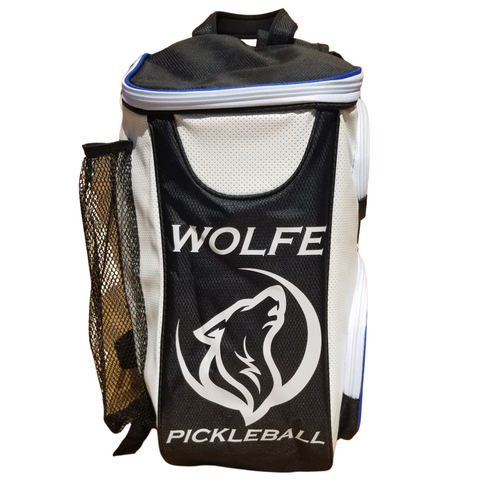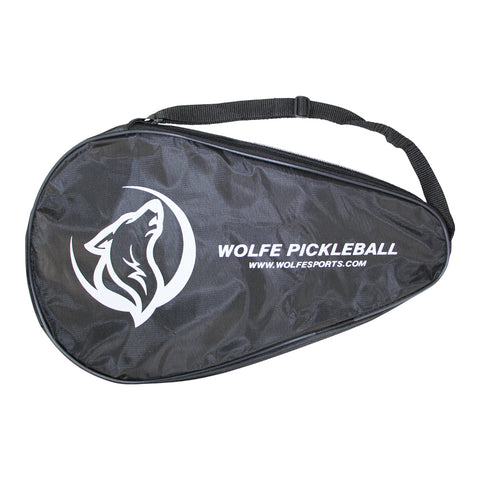Pickleball Bags
Guide to Pickleball Bags
Similar to any other racket sports there are specification standards for the most important equipment. The highest governing body of pickleball, the International Federation of Pickleball (IFP), even sets regulations for clothing and shoes in their official rules PDF. Besides a paddle, ball, and clothing, you may also want something to carry your equipment to the court, and this is where the popular pickleball sling bag comes in. There is no standard for these bags, and this means players have large number of choices to suit their styles.
The main function of a pickleball bag is to help you carry all the paddles and balls you need for a game. To do that, the bag obviously needs to be large enough for both however since pickleball paddles are smaller than those of tennis, racquetball and squash, the dimensions of the bag can be smaller as well. The bag also protects the paddle from any scratches and helps you organize personal items including a water bottle and towel. A typical pickleball bag has compartments to store at least two paddles and room for the balls. When creating pickleball bags, manufacturers considered the standard dimension of a pickleball paddle as follows:
| Paddles | Standard Specifications |
| Size | Combined width and length of a paddle including butt cap and edge guard shall not exceed 24 inches (60.96 cm). It is possible to have wider head and shorter handle or smaller head and longer handle without exceeding the standard specification. However, most common paddles are measured approximately at 15.75 inches (40 cm) long by 8 inches (20.32 cm) wide |
| Thickness | There is no restriction on thickness. |
| Weight | There is no restriction on weight. In choosing a bag, it is also important to consider the weight of your paddles. With no restriction, you may prefer to use heavier paddle, and therefore carry it in a bag made from stronger materials and strap. |
| Alterations | Edge guard on the grip as well as decals and markings on paddle face are the only alterations to commercial paddles allowed by IFP. By adding decals and marking, dimension of the actual paddle changes; such alterations can extend to no further than an inch (25.4 mm) above the top handle or no more than half an inch (12.7 mm) from outer edge of paddle. All altered paddles must not exceed standard specification for dimensions |
| Homemade Paddles | Such paddles are not permitted for official tournaments |
Although there are no standard specifications for pickleball bags, there are some things to consider when choosing the right bag for your needs. Just like other racket sports, you must take the following factors into account:
- Strength: a pickleball bag can be made of any materials, but the most important thing is that you can carry your equipment inside the bag safely without damaging the bag or the equipment. Please remember that there is no restriction in weight.
- Dimension of paddle: the dimension of a pickleball paddle is not very long or wide. Rackets for badminton and tennis are quite long, and they may require specially shaped compartments to fit rackets dimensions. Pickleball paddles are, however, considerably shorter and smaller so pickleball bag doesn’t have to feature paddle-shaped compartments.
- Compartments: the bare minimum compartments are for paddles and balls. Most (if not all) pickleball bags provide additional compartments to store more personal items including water bottle and towel. Some bags even have numerous zippered compartments to safely store electronics such as portable music player, smartphones, and earphones.
Sling Bag: a typical pickleball sling bag comes with single-strap design with easily accessible main compartment to reach the paddles and balls. Front zippered pocket can be added to store additional personal items. Some models even include wire headphone outlet. Sling bag is small but has enough room to store several pickleball paddles securely. The pickleball slingbags tend to be the most popular bag for carrying pickleball equipment due to their small size and light weight.
Duffle Bag: in many respects, it looks like regular badminton bag. Bigger than sling bag, it can store four or more pickleball paddles, a dozen of balls, and all necessities in its main compartment. There are also additional compartments to store some thin items such as books, phones, keys, and water bottle. It has adjustable shoulder strap and carry handle. The only con, or downside, is the size of these bags.
Shoulder Tote: it is more like an all-purpose bad rather than pickleball-specific. It has shoulder strap and numerous compartments to store paddles, balls, water bottle, clothes, phones, books, and other personal items. Some shoulder tote bags have pen holders as well. While it is safer to store pickleball paddles in a zipped compartment, some of these bags provide large enough side compartments to store the paddles. Each side pocket can carry two paddles with their handles sticking out of the compartment.
Backpack: the most versatile of them all. A backpack easily holds more than four pickleball paddles, a dozen or more balls, clothes, phones, keys, hats, and books. A side pocket on each side is ideal water for water bottle. The zippered main compartment may have additional compartments inside to store cards or other thin items. The only con, or downside, is the size of these bags.
Pickleball bags come in various dimensions to suit every player’s needs. For casual play, a player does not usually need to carry more than two paddles and a couple balls, but professionals may carry more paddles and equipment.


